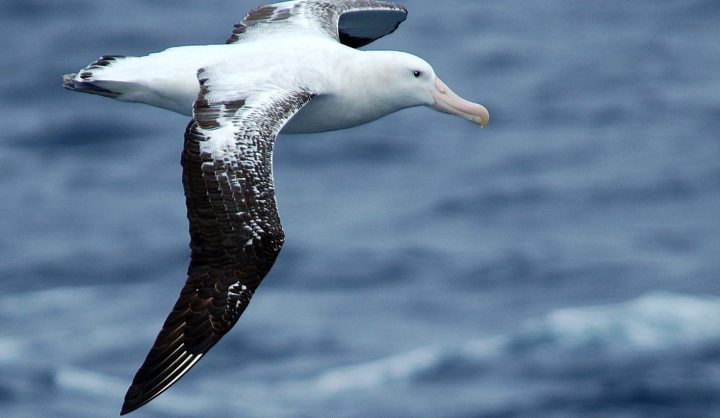World
Op-Ed: Travellers of the wind and the curse of nurdles

This is the story about near-magical seabirds that criss-cross the globe, and small, lentil-sized blobs of plastic called nurdles. It is both astounding and worrying, writes DON PINNOCK.
We live
Poking through this liquid skin are islands where millions of seabirds nest – as far away from humans and other predators as they can get. Safest are rocky outcrops in the icy high latitudes of the polar regions.
Birds like shearwaters, albatrosses, fulmars, kittiwakes, gannets,
For this purpose seabirds construct nests or dig burrows where they lay, warm and – when they hatch – feed their scrawny, hungry young. To protect the chicks from raiding gulls and skuas, a breeding pair (many seabird species
Anybody who’s seen a colony with sometimes hundreds of thousands of nests just beyond pecking distance of each other and heard its mind-numbing cacophony will unfailingly wonder how each bird finds its way back to its nest.
This question became the lifelong pursuit of Gabrielle Nevitt, a professor at the University of California who first visited the Antarctic islands in 1991.
Seabirds like shearwaters belong to a family known at tube-noses because of a pair of exterior nostrils moulded to the upper side of their bills. It was originally thought this oversized snoot helped to disperse salt swallowed while grabbing fish, but Nevitt wondered if it might be meant for what noses are for: smelling.
She soaked absorbent tampons in a variety of fishy-smelling oils and attached them to kites which she flew from the back of a research ship – scientists are inventive people. The kites attracted crowds of petrels and albatrosses. She was ecstatic.
Sniffing around seabird rookeries, she came up with a plausible theory for their homing abilities: each pair and its nest had a particular smell, an aural barcode, and the birds had a phenomenal ability to detect it. The parts of
But smelly nests didn’t solve a much bigger puzzle. How do seabirds – which range
The answer came following a chance meeting with Tim Bates, a chemist at the National Oceanic and Atmospheric Administration. He was investigating a gas called dimethyl sulphide (DMS) emitted by phytoplankton, the microscopic plants that live on the surface of the ocean.
When damaged, they emit the gas which, it seems, could provide aerosols around which clouds gather. Spraying DMS over large tracts of
Nevitt took off in another direction. Krill, the major food source for many seabirds, eat phytoplankton, producing clouds of DMS. Could shearwaters smell DMS?
Bates had sea maps of DMS concentrations. These coincided with krill concentrations and that’s where seabirds concentrate. Birds like albatrosses and fulmars, which hunt fish exclusively, were also zooming in because fish eat krill and follow krill concentrations. Nevitt had a proverbial ah-ha moment.
Seabirds, we now know, navigate the vast oceans by smell. Nevitt found they could smell one molecule of DMS at a concentration of less than one part per 10-billion.
DMS is undoubtedly not the only thing seabirds can smell. Turbulent coastal waters, upwellings around underwater seamounts, ocean currents all have their characteristic smell if you have the nose for it.
As chicks roam further and further, they build up smell maps that eventually allow them to range across
“What may be featureless to us, a waste of undifferentiated ocean, is for them rich with distinction and variety, a fissured and wrinkled landscape, dense in patches, thin in others, a rolling olfactory prairie of the desired and the desirable, mottled and unreliable, speckled with life, streaky with pleasures and dangers, marbled and flecked, its riches often hidden and always mobile, but filled with places that are pregnant with life and possibility.”
There is, of course, a problem. There always seems to be one where humans are concerned.
By now most people know about the vast gyres of plastic sea trash in most oceans. But the bottles, crates, nets and bags are just part of the problem. An almost bigger issue
Billions are made each year and those that don’t become products generally end up in the sea. Fish eat the nurdles and sea creatures and birds eat the plastic litter. This has been going on for half a century and is now a planet-wide disaster.
Sorry, it gets worse. Small pieces of plastic, as they decompose, emit clouds of DMS which attracts seabirds. In the plastic
When our descendants look back on the planet-wide plunder we call civilisation, they’ll wonder why we didn’t notice the danger of extruding trillions of tons of plastic junk on to the land and into the sea. Will there still some albatrosses and shearwaters around? We can but hope. DM
Photo of a wandering albatross by Don Pinnock




















 Become an Insider
Become an Insider